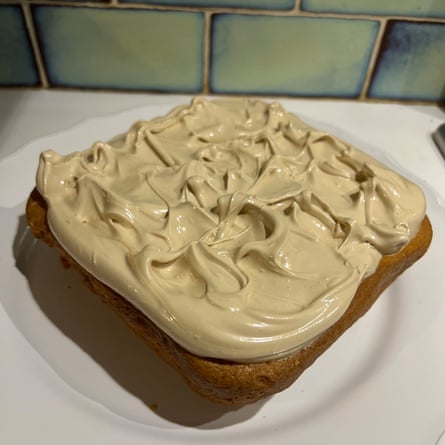
The charms of this beloved Latin American bake can be summed up in two words: sweet and wet. As you cut into it, it should literally ooze the tres leches, or three milks, in which it’s been soaked. Though certainly popularised by a recipe on Nestlé tins, the cake’s precise origins are as cloudy as milk itself, but it’s variously claimed by Nicaragua, Mexico and even Albania as their own – for many Latin American households, it’s what food writer Isabel Orozco-Moore terms the “ultimate celebration cake. Do you have a quinceañera coming up? How about a wedding, birthday party, baptism or graduation? Then it’s time to make a tres leches cake!”
What it’s not, despite the best attempts of The Great British Bake Off, is any ordinary cake – the showstopper challenge to make a stackable version during last year’s ill-fated Mexican week had anyone familiar with tres leches howling in horror. As Latinx author Myriam Gurba observed: “Making a tiered tres leches cake is like making a tiered soup.” Instead, lean into the sogginess. You won’t regret it.
The cake
The real challenge here is to produce something light and airy enough to absorb the liquid, yet strong enough to remain fluffy, rather than dissolving into a trifle-like mush. Most recipes rely on either a whisked or a genoise sponge cake, the first of which involves separating the egg yolks and the whites, and whipping the latter into a meringue before folding the two together, as in María del Mar Cuadra, Karla Zazueta and Nicola Lamb’s recipes. The genoise employed by Rick Bayless, meanwhile, involves whipping whole eggs with sugar, then adding liquid fat for a richer, softer result. The Chilean chef Soledad Correra uses whole eggs, but adds no extra fat.
Bayless, an American chef who specialises in Mexican cuisine, writes in his book Mexican Kitchen that he pulled together several Mexican recipes for tres leches, and then gave it his own spin, which turns out to be creating a slightly different cake altogether, using a much denser almond flour and browned butter base. It’s very nice indeed, but lacks the light airiness of the others.

Correra’s sponge also has a lovely flavour, but is so soft that the bottom layer is almost porridge-like next to the whisked cakes, the most delicate of which comes from the Mexican food writer Karla Zazueta. Her recipe for BBC Food contains a high proportion of eggs to dry ingredients, while the Nicaraguan author María del Mar Cuadra’s recipe for Serious Eats uses more than twice as much sugar and nearly half as much flour again; pastry chef Nicola Lamb’s take for her enormously popular Kitchen Projects Substack newsletter sits somewhere between the two.
Sugar brings something else to the party as well as sweetness and stabilisers – because it attracts moisture, it keeps the crumb tender, which is useful in the absence of extra fat. Flour, meanwhile, gives the cake the strength to withstand the onslaught of liquid. If you’re going to serve – and finish – almost immediately, then Zazueta’s version is light as a cloud, but if you’re going to be making it further ahead of time, or working your way through it over a few days, I’d recommend the higher proportions of dry goods below.
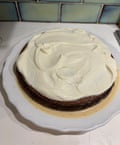
These recipes all use roughly the same amount of liquid: milk in the case of Zazueta and Del Mar Cuadra, and evaporated milk for Lamb, an idea I like because its distinctive, almost savoury flavour is a nice counterpoint to the sugar, though it’s easily swapped for the fresh stuff if you’re less keen.
I’ve also kept the near ubiquitous teaspoon of vanilla extract, because its perfumed sweetness works well with dairy and the cinnamon I’ll be adding to it. Though other flavours tend to be incorporated into the soaking liquid, rather than the cake batter, the use of orange zest and browned butter in the Bayless take suggests you could get more adventurous; I love the sound of John Whaite’s malted tres leches and Michelle Lopez’s coconut version, for example.
The milks

Let’s be honest, though it’s hard not to like a sponge cake*, it’s generally a mere vehicle for embellishment, whether that’s an icing, a fruity accompaniment or a soaking liquid, as here (I must also stress that a light sponge cake and a buttery pound cake, as used in a victoria sandwich, are different things – the latter is well able to stand alone).
The cake element of a tres leches may be more important than, say, a mere trifle sponge, but it’s still very much second fiddle to the stuff poured on top. Traditionally, the three milks that give it its name are evaporated, condensed and whole, which is the combination used by Zazueta and Lamb. Correra and Del Mar Cuadra swap the milk for cream, while Bayless uses homemade cajeta, or goat’s milk caramel, in place of the condensed milk – but, having stood over a pan of milk for 45 minutes, I’m sorry to say I can’t really taste it in the finished article. Like Zazueta, I’ve gone for a little more evaporated milk than condensed, because, as previously mentioned, I love its slightly savoury flavour. And I’ve used milk rather than cream, because I’d like to keep the cake as light as possible to contrast with the topping.
Correra’s recipe inspires me to infuse the milks with cinnamon – a spice Zazueta tells me is a must in proper Mexican tres leches. Adding it to the soaking liquid, rather than just sprinkling a pinch on top, allows the flavour to permeate the entire cake, too. You could also, again like Correra, add cloves, or indeed nutmeg, ginger or any other spice you fancy to the milk. Or you could go off-piste entirely – Lamb, for instance, makes a Hong Kong milk-tea soak by adding a strong Ceylon tea, Sue Quinn makes a chocolate milk soak in her book Cocoa, and Olive magazine adds rum to its version. If it tastes good with milk and sugar, the chances are it will work here.
The toppings
You’d be forgiven for feeling that a tres leches cake needs no further embellishment – Correra simply recommends a little cream and some fresh strawberries on the side – indeed, an acidic fruit makes for a pleasant contrast of flavours). Lamb garnishes hers with a brown-sugar meringue, on the basis that, while meringue is the classic choice, the bitterness of brown sugar tempers its sweetness. But my testers and I prefer the blandly creamy toppings that cut, rather than underline the sugariness of the cake itself. That said, we all find Del Mar Cuadra’s set cream cheese topping a little rich. The runaway favourite is Zazueta’s simple, but effective plain chantilly – though you could, like Bayless, add a slug of orange liqueur (or rum), or indeed dust it with grated lime zest, if the idea appeals to you. Personally, I think it’s perfect just as it is.
Perfect tres leches cake
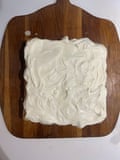
Prep 30 min
Cook 30 min, plus soaking time
Serves 8
Oil or butter, for greasing
120g flour
2 tsp baking powder
3 eggs
60ml evaporated milk
1 tsp vanilla extract
½ tsp fine salt
150g caster sugar
For the soak
200ml whole milk
1 cinnamon stick
200ml condensed milk
300ml evaporated milk
For the topping
300ml whipping cream
1 tbsp icing sugar, sifted
Grease a square 20cm cake tin or a 23cm x 15cm one, and heat the oven to 180C (160C fan)/350F/gas 4. Whisk the flour and baking powder in a small bowl.
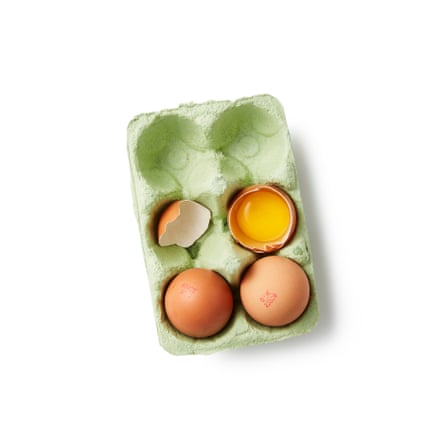
Separate the eggs, then put the whites in the bowl of a stand mixer (or large bowl) and the yolks in a small bowl. Whisk the evaporated milk and vanilla extract into the egg yolks.
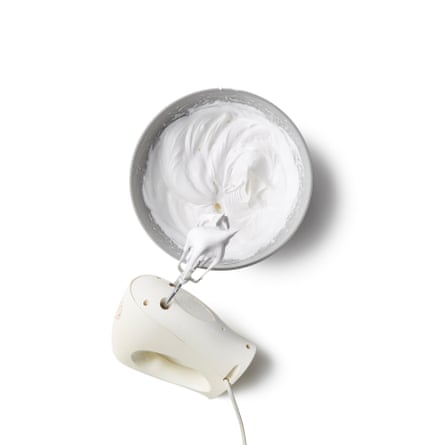
Add the salt to the egg whites, then whisk on a high speed for about a minute, until foamy. Reduce the speed to medium, then continue whisking to soft peaks. Gradually beat in the sugar until it’s all incorporated, then turn up the speed and whisk to stiff peaks; be careful not to overwhisk (the meringue mix will begin to lose its shine and separate).
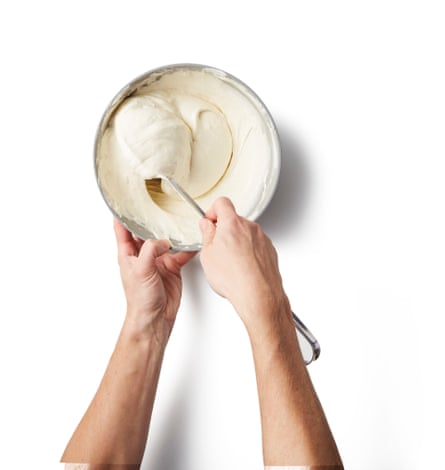
Using a spatula or large metal spoon, gently fold half the egg yolk mixture into the whites, followed by half the flour, then repeat. Tip into the prepared tin and drop the tin several times on to a work surface to knock out any air bubbles. Bake for 25-30 minutes, until golden and firm, then remove and leave to cool completely.
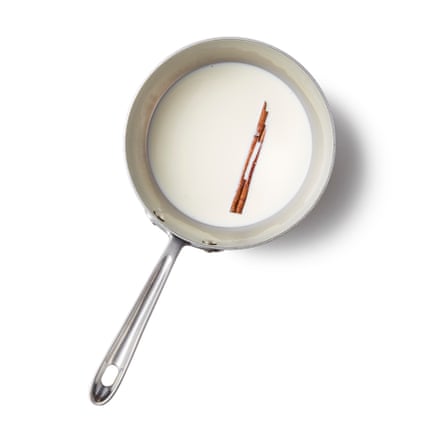
While the cake is cooling, bring the fresh milk and cinnamon stick to a simmer. Leave to bubble gently for five minutes, then take off the heat and leave to cool completely. Remove and discard the cinnamon, then whisk in the condensed and evaporated milks.
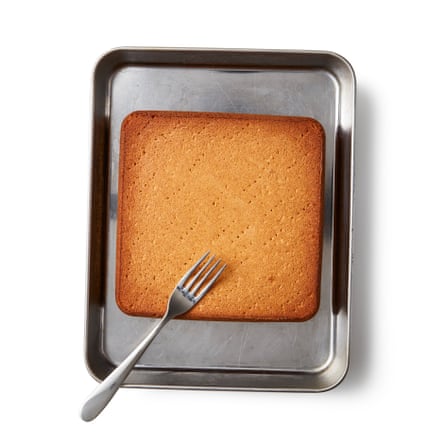
Turn the cooled cake upside down in another baking tin or lipped dish that’s slightly larger than the cake itself, then poke deep holes into it with a skewer or fork. Pour over as much of the milk mix as the cake will absorb, then leave it to soak in. Repeat at intervals until the cake stops taking in any more milk, then put in the fridge to chill for at least two hours (keep any excess liquid to serve with the cake).
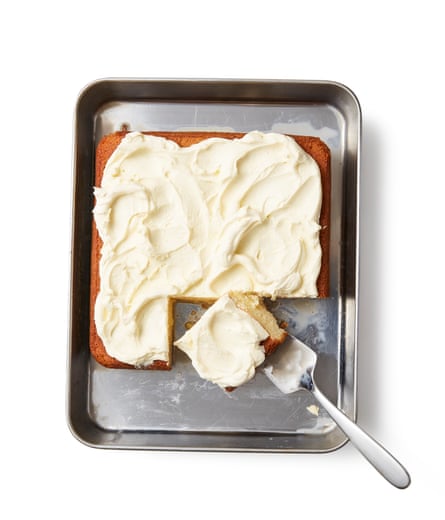
When you’re ready to serve, whisk the cream and sugar to soft peaks, then spread all over the cake, slice and eat.
-
Tres leches cake: do you love its deliciously squidgy texture, or does the idea of soggy cake have you shuddering in horror? Is it made, or served, differently in different countries and regions? And has anyone ever attempted to stack one à la Great British Bake Off?



